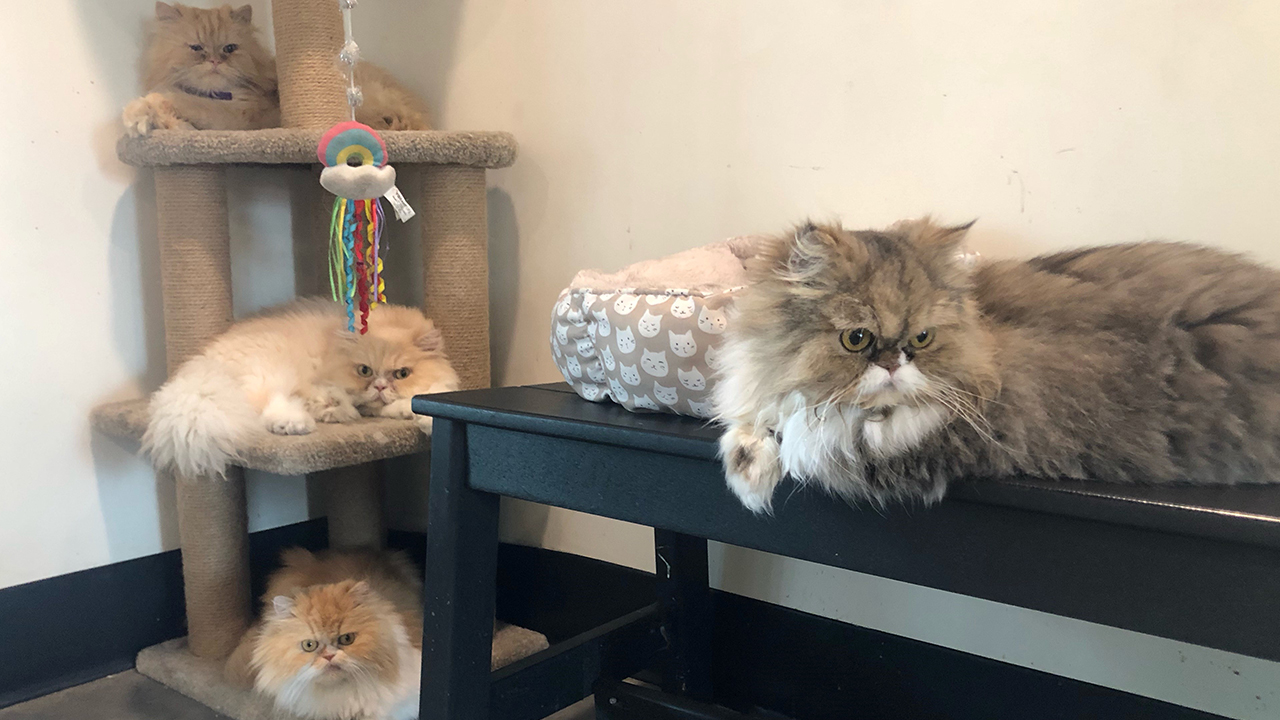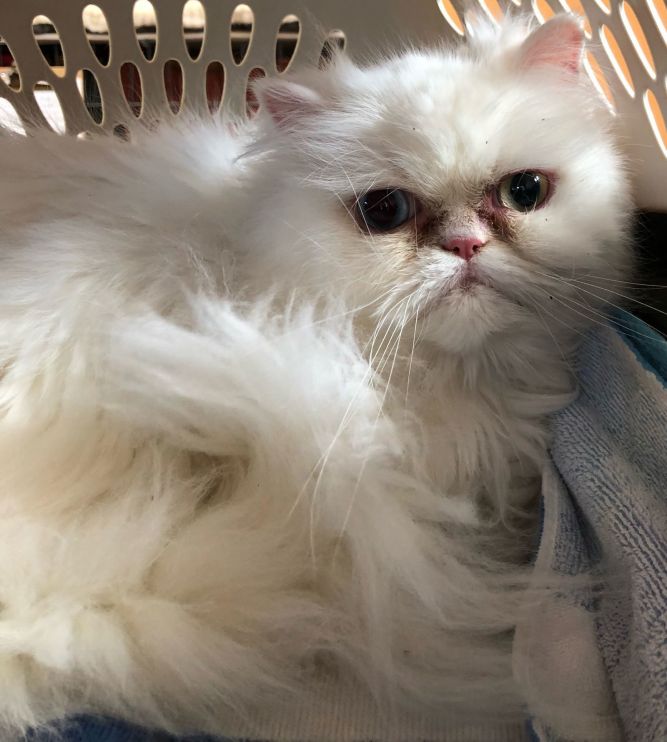Are you a fan of Persian cats? If so, you’re in luck! In this article, we’ll be exploring Persian cat rescues and shelters, shedding light on the amazing work they do to provide loving homes for these adorable felines. From the dedicated volunteers to the heartwarming adoption success stories, we’ll take a closer look at the world of Persian cat rescue. So, whether you’re considering adopting a Persian cat or simply want to learn more about these majestic creatures, join us on this journey as we delve into the wonderful world of Persian cat rescues and shelters.
Adopting a Persian Cat
If you’ve been considering getting a new furry companion, adopting a Persian cat can be a wonderful choice. Persian cats are known for their stunning looks, gentle personality, and affectionate nature. In this article, we’ll explore the benefits of adopting a Persian cat, how to go about the adoption process, and the requirements you need to fulfill.
Benefits of Adopting a Persian Cat
There are many benefits to adopting a Persian cat. Firstly, their unique appearance with long, luxurious fur and expressive eyes makes them absolutely beautiful companions. Persian cats are also well-known for their calm and friendly temperament, making them great for families or individuals looking for a relaxed and loving pet.
In addition, Persian cats are typically low-energy and enjoy a comfortable and quiet environment. If you prefer a more laid-back lifestyle or live in an apartment, a Persian cat will be a perfect fit. Their independent nature also means they are content to spend time grooming themselves, so they require less daily exercise compared to more active breeds.
How to Adopt a Persian Cat
When it comes to adopting a Persian cat, there are several avenues you can explore. One option is to find a Persian cat rescue organization that specializes in rescuing and rehoming these beautiful felines. Another option is to visit local animal shelters, as they often have cats of various breeds available for adoption.
To begin the adoption process, you can start by researching Persian cat rescue organizations online. These organizations usually have a website where you can find information about available cats, adoption procedures, and contact details. You can also check their social media pages for updates on new rescues and success stories.
Requirements for Adopting a Persian Cat
While every rescue organization may have slightly different requirements, there are some common criteria you should be prepared to meet when adopting a Persian cat. Most organizations will require potential adopters to fill out an application form, providing information about their living situation, experience with cats, and ability to care for a Persian cat’s specific needs.
It’s important to note that Persian cats require regular grooming due to their long fur. This means you’ll need to commit to regular brushing and occasional professional grooming sessions to keep their coat healthy and tangle-free. Additionally, as with any pet adoption, you should be financially prepared to cover the costs of food, litter, veterinary care, and any unforeseen medical expenses.
Finding a Persian Cat Rescue
If you’ve made the decision to adopt a Persian cat, the next step is to find a reputable Persian cat rescue organization. These organizations play a vital role in rescuing and rehabilitating Persian cats in need, and they can help guide you through the adoption process. Let’s explore some resources to assist you in finding Persian cat rescues.
Online Resources for Finding Persian Cat Rescues
The internet is a valuable tool when it comes to finding Persian cat rescues. There are several websites dedicated to connecting potential adopters with shelters and rescue organizations. Websites like Petfinder and Adopt-a-Pet allow you to search specifically for Persian cats available for adoption in your area.
You can also visit the websites of well-known and reputable cat rescue organizations, such as the Persian and Himalayan Cat Rescue (PHCR) and the National Persian Rescue. These organizations often have comprehensive listings of available cats and adoption procedures.
Visiting Local Animal Shelters
Another option to find a Persian cat rescue is to visit your local animal shelters. While not all shelters may have Persian cats, some do receive these beautiful felines as strays or owner surrenders. By visiting shelters in person, you can inquire about their current cat population and express your interest in adopting a Persian cat.
Keep in mind that shelters often have limited space and resources, so they may not always have a Persian cat available for adoption. However, it’s worth checking with them periodically as the availability of cats can change.
Contacting Persian Cat Breeders for Rescue Referrals
If you’re having difficulty finding a Persian cat rescue in your area, another option is to reach out to Persian cat breeders. While breeders primarily focus on breeding cats for shows and companionship, they often have connections within the cat community and may be able to provide valuable referrals to rescues or individuals looking to rehome Persian cats.
It’s important to note that reputable breeders prioritize the well-being of their cats and may have a waiting list for their kittens. However, they can still be a valuable resource in your search for a Persian cat rescue.
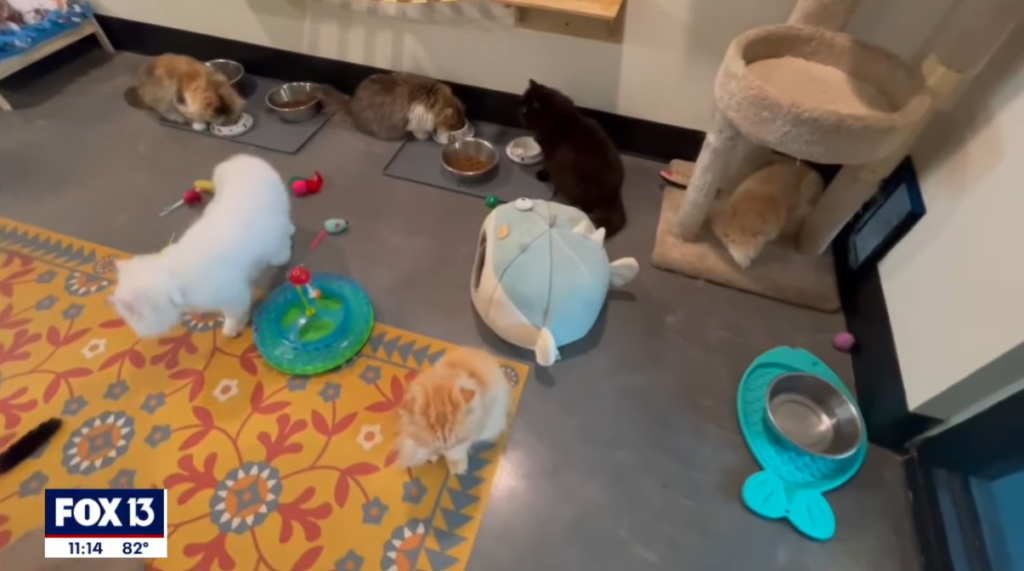
Understanding Persian Cat Shelters
When considering adopting a Persian cat from a rescue organization, it’s important to have an understanding of the shelter environment and the care provided to the cats. Let’s delve into the key aspects of Persian cat shelters, including their conditions, care, and evaluation processes.
Shelter Environment and Conditions
Persian cat shelters strive to provide a safe and comfortable environment for their feline residents. Shelters may consist of individual kennels or communal areas where cats have the opportunity to interact with each other. The layout and design of the shelter play a crucial role in minimizing stress and ensuring the well-being of the cats.
Persian cat rescues prioritize maintaining a clean and hygienic environment. Regular cleaning schedules and practices are implemented to prevent the spread of diseases and maintain a healthy living space for the cats.
Provided Care and Services
Persian cat shelters are dedicated to the physical and emotional well-being of the cats in their care. This includes providing proper nutrition, fresh water, and regular veterinary check-ups. Shelters often have partnerships with local veterinarians who assist in ensuring the cats receive necessary vaccinations and treatments.
In addition to physical care, shelters also focus on the emotional needs of the cats. They provide enrichment activities and toys to keep the cats mentally stimulated. Dedicated volunteers and staff members spend time socializing with the cats, helping them feel loved and cared for.
Evaluation Process for Shelter Cats
Before being made available for adoption, cats in Persian cat shelters usually go through an evaluation process. This assessment helps determine their temperament, health condition, and behavior. Trained volunteers or staff members carefully observe and interact with the cats to assess their suitability for adoption.
The evaluation process may include observing the cat’s response to handling, their interaction with other cats, and their overall sociability. This information is crucial in finding the right match between the cat and their potential adopter.
Rescue Stories and Successes
Stories of Persian cat rescues are filled with heartwarming tales of second chances and happy endings. Let’s explore some of these inspiring stories and the impact that a rescue can make on the lives of Persian cats in need.
Heartwarming Stories of Persian Cat Rescues
One heartwarming rescue story involves a Persian cat named Lily. Lily was found abandoned and frightened, suffering from severe matting and skin infections. With the help of a dedicated rescue organization, Lily received the necessary medical care, grooming, and love that she desperately needed. After a few months of rehabilitation, Lily found her forever home with a kind and caring family.
Another inspiring story involves a Persian cat named Max. Max was surrendered to a rescue organization due to his owner’s unforeseen circumstances. Despite being a senior cat, Max quickly captured the hearts of his new adoptive family. With patience and understanding, Max thrived in his new home, bringing joy and love to his new family members.
Rehabilitation and Happy Endings
Persian cat rescues often take in cats that have been neglected or abused, requiring rehabilitation to regain their health and trust in humans. With the dedication of shelter staff and volunteers, cats receive the necessary medical care, grooming, and socialization to help them overcome their previous hardships.
Through the tireless efforts of rescue organizations, many Persian cats that have once known only sadness and pain now experience the warmth of a loving home. Whether through adoption events or online profiles, these rescued cats find new families who provide them with the care, love, and stability they deserve.
Adoption Statistics and Impact
The adoption of Persian cats through rescue organizations has a significant impact on reducing the number of cats without homes. According to the American Society for the Prevention of Cruelty to Animals (ASPCA), approximately 3.2 million cats enter U.S. animal shelters each year, and adoption rates play a vital role in saving lives.
By adopting from a rescue organization, you not only provide a forever home for a deserving Persian cat but also help free up space and resources for other cats in need. Your adoption makes a direct impact on reducing the number of cats in shelters and creating a more compassionate community for our feline friends.
Volunteering at Persian Cat Rescues
Volunteering at a Persian cat rescue organization is a rewarding experience that allows you to make a positive impact on the lives of these beautiful cats. Let’s explore the benefits of volunteering, the various opportunities available, and how you can get involved.
Benefits of Volunteering at a Persian Cat Rescue
Volunteering at a Persian cat rescue offers numerous benefits for both the cats and the volunteers themselves. As a volunteer, you have the opportunity to contribute your time and skills to help the cats in need, improving their quality of life and increasing their chances of finding forever homes.
For cat lovers, spending time with these majestic creatures brings immense joy and fulfillment. Volunteering can also provide a sense of purpose, as you have a direct impact on the well-being and happiness of the cats under your care.
Types of Volunteer Opportunities Available
Persian cat rescues offer a variety of volunteer opportunities to suit different interests and skill sets. Some common volunteer roles include:
- Cat Care: Assisting with feeding, grooming, and cleaning the cats’ living areas.
- Socialization: Spending time with the cats, providing them with companionship, and helping them become more comfortable around humans.
- Administrative Tasks: Assisting with paperwork, organizing adoption events, and managing online profiles of available cats.
- Fundraising and Events: Helping to plan and execute fundraising events to support the rescue organization’s initiatives.
- Transportation: Assisting with the transportation of cats to and from veterinary appointments or adoption events.
How to Get Involved as a Volunteer
If you’re interested in volunteering at a Persian cat rescue, the first step is to research and find a local organization that aligns with your values and interests. Visit their website or contact them directly to inquire about volunteer opportunities and any requirements they may have.
Rescue organizations may ask you to attend an orientation session or complete a volunteer application. This helps them understand your motivation and ensures you are aware of the organization’s mission and values. Once accepted, you can start contributing your time, compassion, and skills to make a meaningful difference in the lives of these cats in need.
Donating to Persian Cat Rescues
If you’re unable to adopt or volunteer at a Persian cat rescue, another way to support these organizations is through donations. Monetary contributions and supplies make a significant difference in providing necessary care and services to the rescued cats. Let’s explore the importance of donations, the items rescues need most, and ways you can donate and make a difference.
The Importance of Donations for Persian Cat Shelters
Donations are vital for the sustainability and operation of Persian cat shelters. These organizations often rely on the generosity of individuals and communities to meet the financial demands of providing housing, food, medical care, and other essential services for the rescued cats.
By donating to a Persian cat rescue, you directly contribute to the well-being of the cats and help ensure their continued care until they find their forever homes. Your support enables the shelters to cover expenses such as vaccinations, spaying/neutering, microchipping, and emergency medical treatments.
What Rescues Need Most
When considering donating to a Persian cat rescue, it’s important to understand the specific items and supplies that they require on an ongoing basis. Some commonly needed items include:
- Food: High-quality cat food, both dry and wet, to provide a balanced diet for the cats.
- Litter and litter boxes: Providing a clean and comfortable space for the cats to relieve themselves.
- Bedding and blankets: Offering warm and cozy bedding for the cats to rest and sleep.
- Toys and scratching posts: Enrichment items to keep the cats engaged and entertained.
- Medical supplies: Including flea and tick treatments, deworming medications, and wound care supplies.
Reach out to your local Persian cat rescue to inquire about their specific needs, as priorities may vary depending on the organization’s resources and current demands.
Ways to Donate and Make a Difference
There are several ways to donate to Persian cat rescues, depending on your preferences and capabilities. Here are some common methods:
- Monetary donations: Financial contributions are the most flexible way to support rescue organizations. You can donate online through their website or mail a check to their designated address.
- Supply donations: Donating items such as food, litter, bedding, or toys directly to the rescue organization helps provide for the cats’ immediate needs. Check with the rescue for donation drop-off locations and preferred items.
- Fundraising events: Participating in or organizing fundraising events can help raise awareness and generate funds for Persian cat shelters. From bake sales to charity runs, there are many creative ways to make a positive impact.
- Sponsorship programs: Some rescues offer sponsorship programs where you can make a recurring monthly donation to support a specific cat or contribute to the general needs of the organization.
By donating, you become a crucial part of the rescue organization’s mission and contribute to the well-being of Persian cats awaiting their forever homes.
Persian Cat Rescue Organizations
Persian cat rescue organizations play a pivotal role in rescuing and rehabilitating Persian cats in need, ensuring they find loving homes. Let’s explore some prominent Persian cat rescue organizations, their mission and values, and the services they provide.
Prominent Persian Cat Rescue Organizations
There are several well-known Persian cat rescue organizations dedicated to rescuing and rehoming these beloved felines. Here are a few prominent ones:
- Persian and Himalayan Cat Rescue (PHCR): This organization focuses on rescuing Persian and Himalayan cats, providing them with medical care, rehabilitation, and finding them suitable adoptive homes.
- National Persian Rescue: The National Persian Rescue works to rescue and rehome Persian cats throughout the United States. They have a network of volunteers and foster homes dedicated to providing the best care for Persian cats.
- Purebred Cat Breed Rescue (PCBR): While not specific to Persian cats, PCBR assists with the rescue and rehoming of various purebred cats, including Persians. They work collaboratively with other rescue organizations to ensure cats receive the care they need.
These organizations, among others, demonstrate a commitment to the well-being and future of Persian cats, enabling them to find second chances in loving homes.
Their Mission and Values
Persian cat rescue organizations typically have a clear mission and set of values at their core. Their primary goal is to rescue Persian cats in need, providing them with the care and support necessary for rehabilitation and eventual adoption.
Rescue organizations prioritize the well-being and quality of life for every cat under their care. This includes providing appropriate medical care, grooming, nutrition, and socialization opportunities. Their values revolve around compassion, dedication, and the belief that every cat deserves a safe, loving home.
Services Provided by the Organizations
Persian cat rescue organizations provide a range of services in their pursuit of finding permanent homes for rescued cats. Some of the key services include:
- Rescue and rehabilitation: Rescuing cats from various situations, providing necessary medical care, grooming, and addressing any behavioral or health needs.
- Foster care: Placing cats in loving foster homes to give them individualized care, attention, and socialization until they are ready for adoption.
- Adoption matching: Conducting thorough screening processes for potential adopters to ensure a suitable match between the cat’s needs and the adoptive home.
- Education and outreach: Raising awareness about responsible pet ownership, proper care for Persian cats, and the importance of adoption.
These services, combined with the tireless dedication of staff and volunteers, contribute to the success of Persian cat rescue organizations in rehoming and protecting these beautiful cats.
Persian Cat Health and Care in Shelters
When Persian cats are rescued and placed in shelters, their health and well-being become top priorities. Shelters ensure that these cats receive proper veterinary care, nutrition, and grooming to help them thrive. Let’s explore common health issues in Persian cat rescues, the importance of veterinary care, and the role of nutrition and grooming in their overall care.
Common Health Issues in Persian Cat Rescues
Persian cats, like all cat breeds, can be prone to certain health issues. In Persian cat rescues, it’s not uncommon to encounter cats with specific health challenges that require attention. Some common health issues in Persian cat rescues include:
- Eye problems: Persian cats are known for their large, expressive eyes, but their unique facial structure can make them more susceptible to eye infections, tear duct abnormalities, and corneal ulcers.
- Respiratory issues: The brachycephalic (flat-faced) structure of Persian cats can contribute to respiratory problems such as snoring, wheezing, and difficulty breathing.
- Dental issues: Persians are prone to dental problems due to their facial structure and crowded teeth. Regular dental care, including professional cleanings, will help maintain their oral health.
- Polycystic kidney disease (PKD): This inherited disease affects Persian cats and can lead to kidney failure. Testing for PKD is crucial in breeding programs and when adopting cats to ensure their long-term health.
Rescue organizations prioritize detecting and addressing these health issues through veterinary care, ensuring that the rescued cats receive the best chance at a healthy and happy life.
Providing Veterinary Care for Shelter Cats
Veterinary care is of utmost importance in Persian cat rescues. When cats are brought into the shelters, they undergo comprehensive medical evaluations to identify any underlying health issues. Regular vaccinations and preventive treatments for parasites such as fleas and ticks are also crucial to maintaining overall health.
Shelters form partnerships with local veterinarians who provide routine check-ups, vaccinations, and emergency care as needed. These collaborations help ensure that any health concerns are promptly addressed, increasing the chances of successful adoptions and long-term well-being for the cats.
Importance of Proper Nutrition and Grooming
Proper nutrition and grooming are essential for the well-being of Persian cats in shelters. A balanced and nutritious diet helps maintain their overall health, supports healthy skin and coat, and prevents common health issues such as obesity and urinary tract problems.
Persian cats’ long, luxurious fur requires regular grooming to prevent matting and keep their coat healthy. Shelters typically provide grooming services or work with professional groomers to ensure the cats receive regular brushing and, if necessary, haircuts.
By focusing on nutrition and grooming, Persian cat rescues help keep the cats comfortable, healthy, and ready for their new homes.
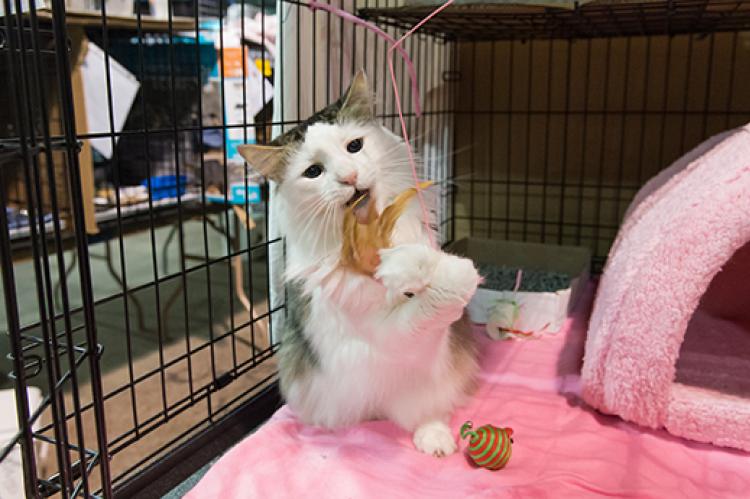
Foster Care Programs for Persian Cats
Foster care programs are valuable components of Persian cat rescues, providing temporary homes for cats in need. Let’s explore the benefits of foster care for Persian cats, the responsibilities of foster parents, and how to find foster care programs in your area.
Benefits of Foster Care for Persian Cats
Foster care programs offer numerous benefits for Persian cats awaiting adoption. By placing cats in foster homes, they experience a more personalized and home-like environment, allowing them to flourish and develop positive behaviors. Other benefits of foster care include:
- Socialization: Foster homes provide daily interaction and socialization opportunities, helping cats become accustomed to various stimuli such as different people, children, and other animals.
- Individual attention: Foster caregivers can address specific needs and provide one-on-one attention to cats with behavioral or medical challenges.
- Temporary escape from shelter life: Cats in foster care experience a break from the shelter environment, reducing stress and allowing them to relax and adjust in a home setting.
- Space availability: Placing cats in foster homes creates space in the shelter for other cats in need, ultimately saving more lives.
Responsibilities of Foster Parents
Foster parents play a vital role in the rehabilitation and successful adoption of Persian cats. As a foster parent, you’ll have the following responsibilities:
- Providing a safe and comfortable environment: Preparing a clean and secure space for the cat, including necessary supplies such as litter, food, water, and bedding.
- Feeding and grooming: Following any specific dietary requirements, providing regular grooming, and monitoring the cat’s overall health.
- Socialization and training: Spending quality time with the cat, helping them acclimate to household routines, and working on any necessary training or behavior modification.
- Monitoring medical needs: Administering any prescribed medications and providing updates to the rescue organization on the cat’s health and progress.
Foster parents act as a bridge between the shelter and forever homes, offering love, stability, and personalized care to help cats on their journey to finding permanent families.
Finding Foster Care Programs
If you’re interested in becoming a foster parent for Persian cats, start by researching local rescue organizations or shelters that offer foster care programs. Reach out to them directly to inquire about their requirements, application process, and the availability of foster opportunities.
Foster care programs may have specific guidelines for foster parents, including home visits, training sessions, and periodic check-ins on the cats’ well-being. By participating in foster care, you contribute immensely to the well-being and successful adoption of Persian cats, providing them with a loving and supportive environment.
Adoptable Persian Cats
If you’ve fallen in love with the beauty and charm of Persian cats and are ready to add one to your family, it’s time to explore the world of adoptable Persian cats. Let’s discover what to expect when searching for an adoptable Persian cat, how to choose the right cat for adoption, and the general adoption process and fees.
Profiles of Available Persian Cats
When searching for adoptable Persian cats, rescue organizations and shelters provide profiles of the cats available for adoption. These profiles typically include information about the cat’s age, gender, personality traits, and any specific needs or requirements.
Photographs of the cats also accompany their profiles, giving you a visual representation of their appearance. Some organizations may include short videos to provide a glimpse into the cat’s behavior and how they interact with people or other animals.
How to Choose the Right Cat for Adoption
Choosing the right cat for adoption is an important decision to ensure a successful and fulfilling long-term relationship. When considering adopting a Persian cat, take the following factors into account:
- Personality and energy level: Consider your lifestyle and preferences when it comes to a cat’s personality and energy level. Do you prefer a calm and laid-back cat or one that is more active and playful?
- Compatibility with other pets and family members: If you have existing pets or have children, it’s essential to choose a cat that will get along well with them. Consult with the rescue organization or shelter about the cat’s history and compatibility with other animals or children.
- Special needs: Some Persian cats may have specific medical or behavioral needs. Ensure that you are prepared and capable of providing the necessary care and attention if adopting a cat with special needs.
By considering these factors and discussing your preferences with the rescue organization, you can choose a Persian cat that is the perfect fit for your home and lifestyle.
Adoption Process and Fees
The adoption process for Persian cats usually involves several steps to ensure a suitable match between the cat and their potential adopter. The specific process may vary depending on the rescue organization, but here is a general outline:
- Initial application: Fill out an adoption application, providing information about your living situation, experience with cats, and the type of cat you are looking for.
- Application review: The rescue organization will review your application, possibly conduct a phone or in-person interview, and may ask for references.
- Home visit: In some cases, a home visit may be arranged to ensure your home is suitable, safe, and conducive to a Persian cat’s needs.
- Meet and greet: If your application is approved, you will have the opportunity to meet and interact with the Persian cats available for adoption. This allows you to assess compatibility and choose the cat that best matches your preferences.
- Adoption contract and fee: Once you’ve chosen a cat, you’ll be required to sign an adoption contract and pay the adoption fee. The fee typically covers the cat’s veterinary care, vaccinations, and other necessary expenses incurred during their time in the rescue organization’s care.
By following the adoption process and paying the adoption fee, you can officially welcome your new Persian cat into your home and provide them with the loving forever home they deserve.
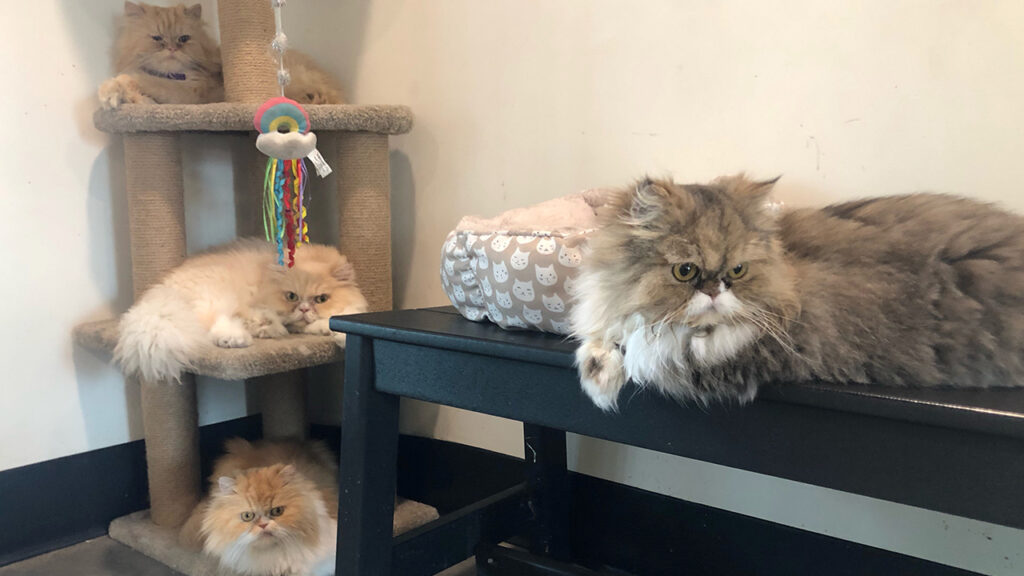
Persian Cat Adoption: 10 Common Questions and Answers
-
Q: How much do Persian cats cost to adopt? A: The adoption fees for Persian cats can vary depending on the rescue organization and the cat’s age, health, and pedigree. On average, adoption fees typically range from $100 to $300.
-
Q: Are Persian cats good pets for families with children? A: Persian cats, known for their gentle nature, can be great pets for families with children. However, it’s important to teach children how to interact respectfully with cats and supervise their interactions to ensure the safety and well-being of both the cat and the child.
-
Q: Are Persian cats hypoallergenic? A: Persian cats are not considered hypoallergenic. While their long fur may reduce the amount of dander they release into the environment, they can still trigger allergies in sensitive individuals. Regular grooming and a clean living environment can help minimize allergens.
-
Q: Do Persian cats require a lot of grooming? A: Yes, Persian cats require regular grooming to prevent matting and maintain the health of their coat. Daily brushing and occasional professional grooming sessions are recommended to keep their fur tangle-free and free from debris.
-
Q: Can Persian cats live in apartments? A: Persian cats can adapt well to apartment living as long as they have enough space to move comfortably and access to their basic needs, such as food, water, litter box, and scratching posts. Their low-energy nature makes them suitable for apartment living.
-
Q: Do Persian cats have specific dietary requirements? A: Persian cats have a tendency to develop urinary tract problems, so it’s important to feed them a balanced and appropriate diet. Your veterinarian can recommend the best type of food and feeding routine for your Persian cat’s specific needs.
-
Q: How long do Persian cats usually live? A: Persian cats have an average lifespan of 12 to 16 years. With proper care, nutrition, and regular veterinary check-ups, some Persian cats can live well into their late teens.
-
Q: Can Persian cats be left alone for long periods? A: Persian cats can handle some alone time, but they thrive with regular human interaction. If you’ll be away for extended periods, consider providing them with toys, scratching posts, and a stimulating environment to keep them entertained and prevent loneliness.
-
Q: Do Persian cats get along with other pets? A: Persian cats have a generally peaceful and non-confrontational nature, making them compatible with other pets, including dogs and other cats. Proper introductions and gradual socialization are essential to ensure a harmonious relationship.
-
Q: What should I do if I can no longer care for my adopted Persian cat? A: If you find yourself unable to care for your adopted Persian cat, reach out to the rescue organization or shelter from where you adopted them. They can assist in finding a suitable solution, such as rehoming the cat or providing temporary foster care until a new home is found. It’s important to never abandon or release the cat on your own, as this puts their well-being at risk.
